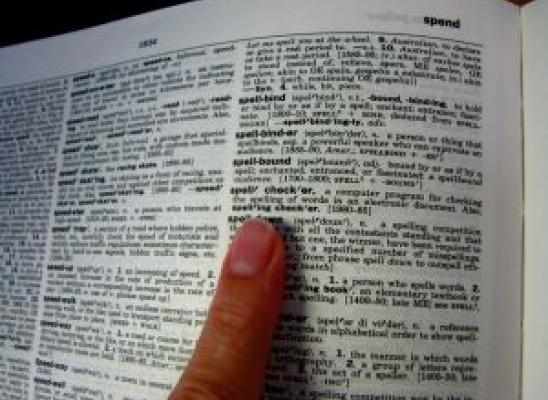Understanding Baby Trich

Online test
Find out the severity of your symptoms with this free online test
Does my baby have trich?
When parents notice their little one missing or pulling out their hair, it can be alarming and confusing. After all, trich emerges in older kids, right? Actually, hair pulling can occur at any age, even in infants and very young children. This early hair pulling is often referred to as “baby trich”, and while it involves hair loss, it is a distinctly different phenomenon from the trichotillomania that develops in later childhood or adolescence. Understanding these differences can help parents respond with appropriate support and less worry.
What is Baby Trich?
Paediatric trichotillomania, or “baby trich”, refers to repetitive hair pulling behavior that emerges in very young children, typically between ages 0 to 5. (Yes, infants sometimes pull.) The pulling results in patches of thinning or missing hair and can affect both the child and family. This early childhood hair pulling often resolves on its own. Sometimes, however, it persists and can be worrisome for parents. There is some evidence to suggest that left untreated, paediatric trichotillomania can sometimes persist into later years and contribute to more severe symptoms. So, it’s important to be in consultation with your paediatrician.
While the behavior looks similar to later-onset trichotillomania, baby trich often has different underlying causes and follows a different trajectory than when it appears in older children and teens.
How Baby Trich Differs from Later-Onset Trichotillomania
In babies and toddlers, hair pulling seems to be an effort to self-soothe, similar to thumb-sucking or carrying a comfort blanket. Young children often twirl or tug at their hair when they're tired, falling asleep, watching television, or feeling stressed. For many little ones, it's simply a sensory experience that feels calming or satisfying, without the complex emotional components often present in later-onset trichotillomania. In fact, little ones seem to be generally unbothered by lost hair.
In contrast, trichotillomania that begins in pre-teens or teenagers tends to be more persistent and is often intertwined with anxiety, perfectionism, or emotional regulation challenges. Older children and teens are more likely to experience urges, use pulling to manage specific emotions, or develop rituals around the behavior. They typically experience more awareness of their pulling and may feel shame or distress about their behavior, creating a cycle that can be harder to break.
The most encouraging difference is the prognosis. Baby trich typically resolves on its own as children develop new coping strategies and mature emotionally. Many children naturally outgrow the behavior, especially with gentle intervention and support from their parents.
What Parents Can Do
It’s important to know that your baby’s hair pulling is not your fault. In fact, you play a key role in helping your little one through this time. Recognizing baby trich early allows parents to respond supportively.
Little hands are busy so it’s not always easy to notice a little one’s hair pulling. Some common signs to watch for include:
- Missing or thinning patches of hair - especially on the crown or side of the head
- Prolonged hair pulling - Remember, hands in the hair is not common and often seen while babies are nursing, napping, etc. It’s important to be aware of your child’s patterns of behavior and notice changes.
- Hair in the hands or mouth - You might find strands of hair in your child's hands, mouth, or around their sleeping area. Some young children may play with their pulled hair or occasionally put it in their mouth. It’s important to be especially aware of this behavior. Ingesting hair is a behavior known as trichophagia and can lead to serious medical issues over time.
Help and Support
If you notice these signs, remember that baby trich is usually a temporary phase, not a cause for panic. It's simply one way young children learn to regulate themselves as their nervous systems develop.
The good news is that gentle interventions often work well. Avoid giving the behavior negative attention or becoming visibly upset when your little one pulls as this can unintentionally reinforce the unwanted behavior. Instead, offer alternative sensory experiences, like a soft toy to stroke or a textured blanket that they can stroke, pull or pinch. Maintaining a consistent, calming bedtime routine may help too.
Most importantly, avoid shaming or punishing the behavior. Your baby is learning to self-soothe and self-regulate. Instead, practice loving patience.
Every parent knows that parenting doesn’t come with instructions and knowing what to do to help isn’t always clear. And, research has found that the stress can take its toll on you and the family too. That’s where a therapist with expertise in working with trich and families can help. They can answer your questions and suggest positive strategies for helping your little one, and ways to support yourself and your family too.
Remember, with support and gentle guidance, most children move past baby trich naturally, developing healthier self-soothing strategies as they grow.
If you’re a parent wondering about your child’s hair pulling, you don’t have to figure it out on your own. At Trichstop, our team of expert therapists can help you understand what’s happening and work with your to find strategies that support your child and your family. The support you need is here.
References
1. Falcão, Mariana & Magalhães, Patrícia & Sá, Teresa & Liz, Mariana & Lopes, Ana & Antunes, Marta & Silva, Ana & Martins, Vânia. (2023). Baby trich: the role of psychosocial stressors in pediatric trichotillomania. Nascer e Crescer. 32. 34-37. https://www.researchgate.net/publication/373952686_Baby_trich_the_role_of_psychosocial_stressors_in_pediatric_trichotillomania
2. Diefenbach, G. J., Mouton-Odum, S., & Stanley, M. A. (2002). Affective correlates of trichotillomania. Behaviour research and therapy, 40(11), 1305–1315. https://pubmed.ncbi.nlm.nih.gov/12384325/
3. Vorndran, C. M., Pace, G. M., Luiselli, J. K., Flaherty, J., Christian, L., & Kleinmann, A. (2008). Functional analysis and treatment of chronic hair pulling in a child with cri du chat syndrome: effects on co-occurring thumb sucking. Behavior analysis in practice, 1(1), 10–15. https://pmc.ncbi.nlm.nih.gov/articles/PMC2846574/#abstract1
5. Harrison, J. P., & Franklin, M. E. (2012). Pediatric trichotillomania. Current psychiatry reports, 14(3), 188–196. https://pmc.ncbi.nlm.nih.gov/articles/PMC3366724/
Online test
Find out the severity of your symptoms with this free online test
Start your journey with TrichStop
Take control of your life and find freedom from hair pulling through professional therapy and evidence-based behavioral techniques.
Start Now



